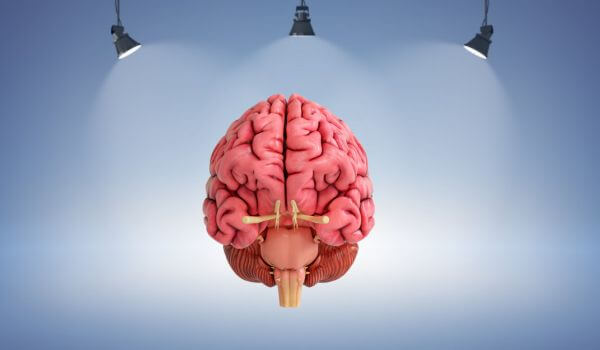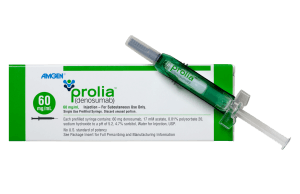
Women in their 40s are twice as likely to experience an eating disorder as they are to be diagnosed with breast cancer. This stage of life, which includes perimenopause and menopause, often overlaps with major changes like divorce, losing a parent, children leaving home, health issues, and the natural effects of aging. These times can be challenging for many women. Add to this the hormonal changes and social pressure that women face to stay slim and youthful, and it can make things feel even harder as the body goes through changes.
How common are midlife eating disorders?
It’s hard to know how many women face eating problems in middle age, but research shows that by the age of 40, about one in five women has dealt with an eating disorder. Many first showed symptoms during their teenage years.
How do you know if someone has an eating problem?
Eating disorders can take over a person’s life, making everyday activities like working, maintaining relationships, or even getting dressed feel impossible.
A common myth is that you can tell if someone has an eating problem just by their appearance, but eating disorders can affect anyone, regardless of age, weight, size, gender, or background, making it difficult to identify.
What are the most common midlife eating problems?
While many people know about anorexia and bulimia, there are other eating disorders too. For those aged 35 to 44, the most common is unspecified feeding or eating disorder (UFED), followed by binge eating disorder. UFED includes behaviors that cause distress but don’t fit into other specific categories. Among people aged 45 to 54, binge eating disorder is the most common.
Binge eating disorder is becoming more common in older women, which isn’t surprising given the pressures they face in midlife. Many are busy caring for children or grandchildren, looking after aging parents, and managing full-time jobs. This often means they don’t have much time to focus on preparing regular, healthy meals. When people are constantly juggling tasks, they might skip meals, grab a quick energy bar, and lose touch with when they feel hungry or full. Many do not eat enough during the day until their body signals extreme hunger later on. This can lead to cravings for high-fat, high-sugar foods and eating quickly to fill the empty feeling, which may start a pattern of binge eating.
Dealing with eating problems during menopause can be very challenging. Hormonal changes during this time can make symptoms worse or even cause eating disorders to return after many years. Many women struggle to get clear answers from health professionals or are even too embarrassed to talk to them about it, which makes it harder for them to find treatment.
Doctors need guidance to handle changes in eating disorders during menopause, as most resources focus on treating teenagers and young adults.
Why are eating problems so dangerous?

Some things can raise the chances of developing an eating disorder in midlife. Changes in the body during perimenopause, the time before menopause, and menopause itself can play a role. Most women enter perimenopause in their 40s, and during this time, estrogen levels drop. This slows down metabolism and can lead to weight gain and other changes in the skin and body that relate to perceived beauty. Eating disorders usually don’t have just one cause. They are influenced by a mix of biology and environmental factors. Society’s focus on weight loss, diet trends, and beauty standards can also have an impact. Combined with the changes that happen in midlife, these factors can increase the chances of someone developing an eating disorder, especially if they are already vulnerable.
Eating disorders that cause malnutrition can also contribute to issues with brain function. For example, studies show that balanced nutrition can slow the rate of age-related cognitive decline and may protect against vascular dementia.
Getting help for an eating disorder 
Treatment for eating disorders often includes working with a mental health professional and sometimes a dietitian or medical doctor. Reaching out to medical providers is the first step to getting help. For those struggling with an eating disorder, know that recovery is possible. It takes time, patience, and commitment, but with the right support and treatment, individuals can overcome their eating disorder and live a fulfilling life. Seeking help is a courageous step towards healing and should be celebrated.
FAQs
Do eating problems usually develop during middle adulthood?
Eating disorders can develop at any age, but they are most commonly seen in adolescence and young adulthood. However, it is not uncommon for individuals to develop an eating disorder during middle adulthood or later in life.
What are four characteristics of a person with an eating problem?
- Obsession with weight and body image: People with disordered eating often have a distorted perception of their own body and may constantly obsess over their weight, shape, or appearance.
- Restrictive eating patterns: This can include strict dieting, cutting out entire food groups, or severely limiting caloric intake.
- Compulsive behaviors around food: This can involve binge eating, purging through vomiting or laxatives, or other unhealthy methods to control one’s weight.
- Negative self-image: People with disordered eating often have low self-esteem and a negative view of themselves, which can contribute to their unhealthy relationship with food.
Can you develop anorexia in your 40s?
Yes, it is possible to develop anorexia in your 40s. While eating disorders are often associated with teenagers and young adults, they can occur at any age. The development of anorexia in middle-aged or older individuals may be triggered by a variety of factors such as midlife stressors, changes in body shape due to aging or menopause, and underlying mental health issues like depression or anxiety.
What is orthorexia?
Orthorexia refers to an unhealthy obsession with consuming only “clean” or healthy foods. The term comes from the Greek words “ortho,” meaning correct, and “orexis,” meaning appetite. Unlike other eating disorders that focus on food quantity, orthorexia is centered on food quality, with individuals becoming excessively preoccupied with the purity or nutritional value of their diet. This fixation can interfere with daily life, leading to rigid eating habits and social isolation. While prioritizing healthy eating is generally positive, orthorexia crosses the line into harmful territory.
Do you ever heal anorexia?
Recovery from anorexia is achievable with effective treatment, including attaining a healthy weight. However, the risk of relapse increases during stressful times or in triggering situations. To maintain progress and reduce the likelihood of setbacks, ongoing support is essential. Regular therapy or check-ins during challenging periods can provide the tools and guidance needed to stay on track. Building a strong support system can help reinforce healthy habits and coping strategies.
Which eating disorder is the hardest to detect?
Bulimia nervosa is often difficult to detect because those who struggle with it typically engage in bingeing and purging behaviors in secret. They may go to great lengths to hide their habits, making it challenging for others to notice. Subtle warning signs, such as discarded food wrappers, empty containers, or laxative packaging, can hint at the condition.


















